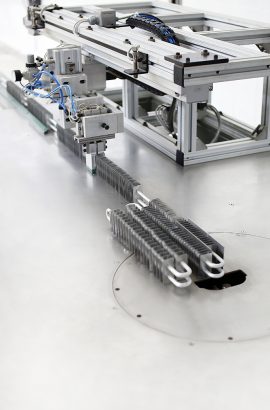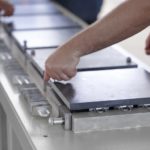NO-FROST EVAPORATORS

No frost refrigerators are based on the use of finned evaporators. The scope of this kind of evaporator is to collect the humidity, continuously moved by a fan inside the refrigerated cabinets. The vapor is condensed on the fins that are cooled by a primary circuit made by tubes where the fins are in mechanical- thermal contact. The condensed vapor is transformed in ice on the fins and removed from the fin surfaces using a defrosting cycle produced by a heater element. The process is automatic. The water produced by this operation is discharged outside the cabinet. This means that the internal environment of the cabinet is totally dry and this helps with healthy preservation of the foods when properly stored in closed containers.
Material
- Al pipe (9.52mm OD) X (wall thickness 0.7~1.0mm)
- Fin stock aluminum foil, thickness is 0.13~0.25mm
- Inlet and outlet tube: Al-Copper tube
THE CONSTRUCTION OF THE FINNED EVAPORATORS IS BASED ON:

Please fill in this form if you have any inquiries and we will reply to you as soon as possible.









